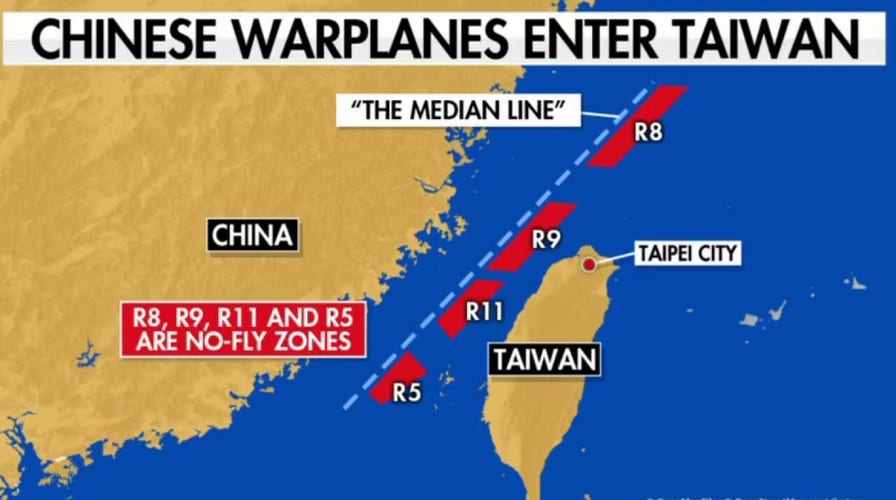Analyzing The US-China Conflict: The Role Of A Pivotal Military Base

Table of Contents
Geostrategic Importance of Military Bases in the US-China Conflict
Military bases are fundamental to the concept of "power projection," enabling nations to exert influence far beyond their borders. They serve as forward operating locations, facilitating rapid deployment of forces, intelligence gathering, and the maintenance of a credible military presence. The geographical distribution of these bases is therefore a key factor in shaping the US-China power dynamic.
Key US military bases in the Asia-Pacific region, such as those in Japan, South Korea, and Guam, offer significant strategic advantages. These locations provide crucial access to vital sea lanes, allow for rapid response to potential conflicts in the region, and serve as platforms for air and naval operations. Conversely, China's expanding military infrastructure, particularly in the South China Sea, significantly alters the regional power balance. These bases enhance China's ability to control key waterways, project power into the surrounding region, and challenge existing US influence.
- Pivotal US Bases: The US bases in Japan (like Yokota Air Base and Kadena Air Base) and South Korea (Osan Air Base, Kunsan Air Base) offer critical staging areas for air and ground operations. Guam's strategic location provides a vital logistical hub for the US Navy and Air Force.
- Key Chinese Bases: Artificial islands constructed in the South China Sea, equipped with military infrastructure, significantly expand China’s reach and influence, potentially impacting freedom of navigation and regional stability. Bases along the Chinese coastline also enhance its ability to project naval power.
- Impact on Regional Stability: The presence and expansion of military bases by both sides directly influence regional stability. Increased military activity near these bases heightens tensions and risks accidental escalation.
The Economic Implications of Military Base Presence
The economic impact of military bases in the US-China conflict extends far beyond their direct costs. These bases significantly influence trade routes, access to vital resources, and overall economic activity in the region. The potential disruption of global supply chains due to military actions near these bases poses a serious threat to global economic stability.
- Affected Economic Sectors: Shipping, tourism, fishing, and manufacturing are particularly vulnerable to disruptions stemming from military actions near strategically important bases. Increased tensions can lead to higher insurance costs, reduced trade flows, and market volatility.
- Economic Sanctions and Trade Wars: Military activities near bases, especially those involving aggressive posturing or provocative actions, can trigger economic sanctions and trade wars, further impacting global economic growth.
- Costs of Maintaining Bases: The substantial economic costs associated with the construction, maintenance, and defense of these bases are a significant factor, impacting national budgets and potentially influencing other policy decisions.
The Role of Military Bases in Shaping Diplomatic Relations
Military bases are not merely instruments of military power; they profoundly influence diplomatic negotiations and international relations. Their presence or expansion can be interpreted as a signal of intent, serving as tools of deterrence or, conversely, as sources of provocation, potentially escalating tensions.
- Diplomatic Incidents: Incidents involving aircraft or naval vessels operating near military bases have frequently led to diplomatic friction and heightened tensions between the US and China. Miscalculations or unintended actions near these bases can quickly escalate into major diplomatic crises.
- Alliances and Partnerships: The strategic positioning of military bases strengthens alliances and partnerships. The presence of US bases in allied countries reinforces security commitments, while China’s base expansion fosters closer ties with countries within its sphere of influence.
- Public Opinion and International Perception: The deployment and actions of military personnel based near potential conflict zones can significantly shape public opinion both domestically and internationally, influencing perceptions of both countries involved in the conflict.
Future Scenarios and Potential Escalation
Predicting future scenarios involving the US-China conflict requires careful consideration of several factors, including technological advancements, evolving geopolitical alliances, and the potential for miscalculation. The risk of accidental escalation or intentional conflict originating from actions around military bases remains high.
- Military Modernization: Both the US and China are engaged in significant military modernization efforts, including the development of advanced weapons systems and cyber warfare capabilities. These advancements increase the potential for both conventional and unconventional forms of conflict.
- Cyber Warfare: The vulnerability of military bases to cyberattacks presents a new dimension to the conflict, potentially disrupting operations, compromising intelligence, and creating instability.
- De-escalation Strategies: Effective communication, confidence-building measures, and clear lines of communication are crucial to avoid accidental escalation and manage the risks associated with the proximity of military bases.
Conclusion
The analysis of the US-China conflict is incomplete without a thorough understanding of the significant role played by pivotal military bases. These strategically positioned installations have profound geostrategic, economic, and diplomatic implications, influencing power dynamics, shaping international relations, and impacting global stability. The potential for escalation remains a serious concern, underscoring the need for continued dialogue and de-escalation strategies.
To promote international peace and stability, further research and discussion regarding the US-China conflict and the critical role of strategically positioned military bases are essential. Keywords such as "US-China military buildup," "South China Sea conflict," and "Indo-Pacific security" can provide valuable starting points for further investigation. The continued analysis of the US-China conflict and the pivotal role of military bases is vital for navigating the complex challenges ahead.

Featured Posts
-
 Sinners Cinematographer Captures The Mississippi Deltas Immensity
Apr 26, 2025
Sinners Cinematographer Captures The Mississippi Deltas Immensity
Apr 26, 2025 -
 Emerging Markets Fund Liquidation Point72s Trader Exodus
Apr 26, 2025
Emerging Markets Fund Liquidation Point72s Trader Exodus
Apr 26, 2025 -
 Can Harvard Be Saved A Conservative Professors Perspective
Apr 26, 2025
Can Harvard Be Saved A Conservative Professors Perspective
Apr 26, 2025 -
 Hollywood Strike Actors Join Writers Bringing Production To A Standstill
Apr 26, 2025
Hollywood Strike Actors Join Writers Bringing Production To A Standstill
Apr 26, 2025 -
 Nfl Draft Green Bays First Round Action
Apr 26, 2025
Nfl Draft Green Bays First Round Action
Apr 26, 2025
